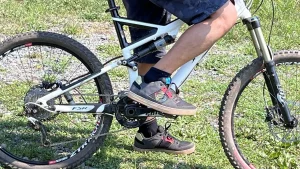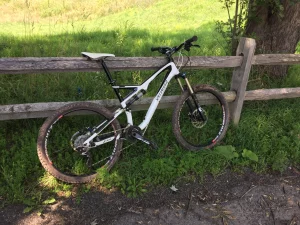Tips for Teaching Kids to Ride a Bike
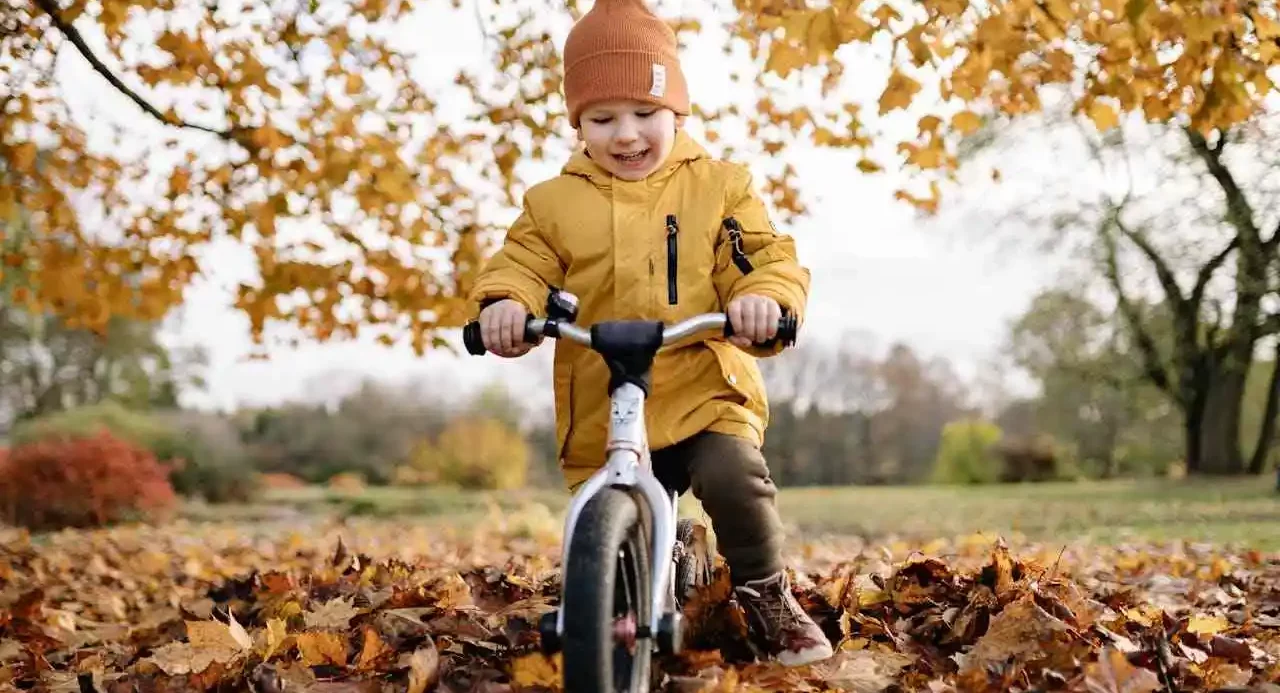
Table of Contents
Start with Bike Safety Precautions
- Wear Proper Safety Gear: Ensure your child wears a well-fitted helmet, knee pads, and elbow pads to minimize the risk of injuries in case of falls or accidents. Make sure the helmet sits level on their head and covers their forehead, and the pads cover the entire knees and elbows.
- Choose the Right Bike: Select a bike that is the appropriate size and height for your child. A bike that is too big or small can be challenging to control and increase the risk of accidents.
- Start in a Safe Environment: Begin teaching in a safe, open, and flat area, away from traffic, such as a park or empty parking lot. This allows your child to learn and practice without the added stress of cars or obstacles.
- Check the Bike’s Condition: Regularly inspect the bike for any loose bolts, damaged parts, or worn tires. Proper bike maintenance ensures that the bike is safe and reliable for your child to ride.
- Teach Basic Skills: Before riding, teach your child basic skills such as how to balance, steer, and brake. Let them practice these skills in a controlled environment.
- Teach Safety Rules: Instruct your child on the importance of stopping at intersections, using hand signals, and staying alert for pedestrians, cars, and other obstacles. Explain basic traffic rules such as stopping at stop signs, looking both ways before crossing a street, and using hand signals to indicate turns.
- Start Slowly: Begin with slow, short rides, gradually increasing speed and distance as your child gains confidence and skill.
- Supervise and Support: Always supervise your child while they’re learning to ride a bike and offer encouragement and guidance. Consider using a balance bike or training wheels as a starting point. Stay close by to offer support and guidance.
- Encourage Visibility: Make sure your child wears bright-colored clothing and consider adding reflectors or lights to the bike to increase their visibility to others, especially when riding near dusk or in low-light conditions. Consider adding reflective strips to their clothing or bike.
- Encourage Communication: Teach your child to communicate with others on the road by using clear signals and making eye contact with drivers and pedestrians.
Set a Good Example: Be a role model for your child by following bike safety rules yourself. Wear a helmet and obey traffic laws when riding together.
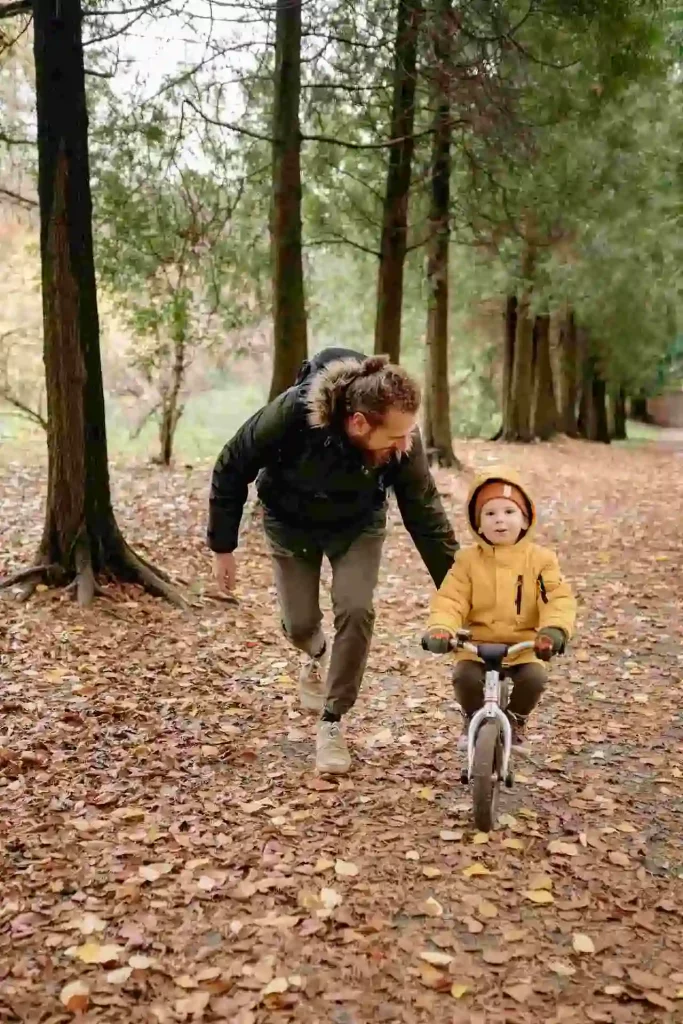
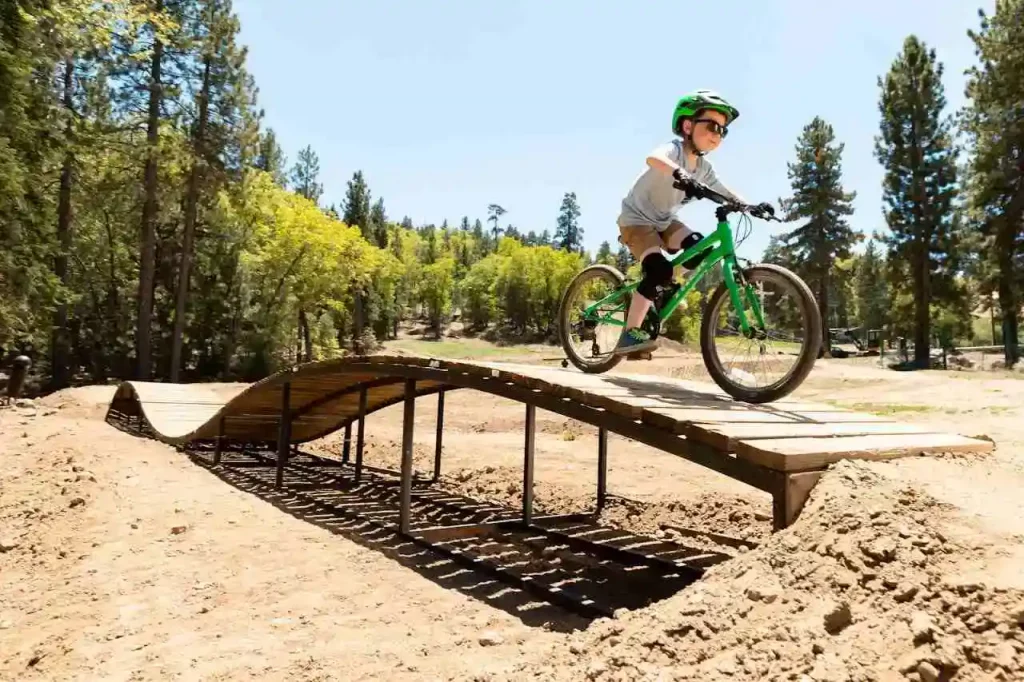
Answers to Common Questions Kids Have When Learning to Ride
- How long will I take to learn to ride the bike? Answer: It varies from child to child, but with regular practice and patience, most kids can learn to ride a bike within a few weeks.
- Will I fall and get hurt? Answer: Falls are a natural part of the learning process. Wearing protective gear and practicing in a safe environment can help minimize the risk of serious injuries. If you fall, try to get back up, brush yourself off, and keep trying. You’ll get better with practice!
- Why do I need to wear a helmet? Answer: Wearing a helmet protects your head if you fall off your bike. It keeps you safe and helps prevent injuries, just like how a superhero wears a helmet for protection!
- Can I ride with my friends? Answer: Once you’ve learned to ride confidently and safely, you can ride with friends. Always communicate with your friends and follow safety rules while riding together.
- How do I stop the bike? Answer: Practice using the brakes gently but firmly to slow down and come to a stop. Also, learn how to use your feet to stop if necessary.
- What if I can’t keep my balance? Answer: Balancing on a bike takes practice. Start by practicing with training wheels or a balance bike, and gradually work your way up to riding without them.
- What should I do if I get tired? Answer: If you feel tired or frustrated, take a break and try again later. Learning to ride a bike should be fun and enjoyable.
- How do I know when I’m good enough to ride without help? Answer: As your skills and confidence improve, you’ll find that you need less assistance. When you feel comfortable riding without help, you’re probably ready to ride independently.
- Why do I need to wear a helmet? Answer: Helmets protect your head in case of falls or accidents. Wearing a helmet is a crucial safety measure that can prevent serious injuries.
- Why do I have to stay on the sidewalk or bike path? Answer: Sidewalks and bike paths are safer than riding in the street because there are no cars driving there. Staying on the sidewalk or bike path keeps you away from traffic so you can ride without worrying about cars.
- What if I get lost? Answer: It’s important to ride in places we know and to always stay where we can see our house or a landmark. If you ever feel lost, stop your bike, and wait for an adult to help you find your way back.
- Why do I have to look both ways before crossing the street? Answer: Looking both ways helps us make sure no cars are coming. It’s like checking for monsters before crossing a bridge in a fairy tale. We want to make sure it’s safe to cross so we can stay safe.
- Can I ride with my friends? Answer: Riding with friends can be fun, but it’s important to always follow the safety rules, like wearing helmets and staying on the sidewalk. Riding together can make the adventure even more exciting!
- What if I get a flat tire? Answer: If you get a flat tire, don’t worry! We can fix it together. We’ll carry a small pump and a patch kit with us, so we can pump up the tire and patch any holes. It’s just like fixing a boo-boo on your bike!
- How do I know when I’m ready to ride without training wheels? Answer: When you can balance and steer your bike without wobbling too much, you’re probably ready to try riding without training wheels. We’ll practice in a safe area, and I’ll hold onto the back of your seat to help you balance until you’re comfortable on your own.
- Why do I have to signal when turning? Answer: Signaling lets other people know which way you’re going, just like how a captain steers a ship. It helps keep everyone safe by avoiding surprises and letting others know your next move.
Can I ride my bike in the rain? Answer: It’s best to avoid riding in the rain because it can make the ground slippery, and it’s harder for drivers to see you. If it starts raining while we’re out riding, we’ll find a safe place to stop and wait for the rain to stop before continuing our adventure.
Tips for Choosing Kids Bike Helmet
Selecting the right bike helmet for your child is crucial for ensuring their safety and comfort while cycling. Here are some tips to help you choose the perfect kids’ bike helmet:
- Proper Fit: The helmet should fit snugly on your child’s head without being too tight or too loose. Measure your child’s head circumference and choose a helmet that fits snugly without being too tight or too loose. Most helmets have adjustable straps and dials to help achieve a perfect fit.
- Helmet Type: Look for helmets specifically designed for biking, as they provide the necessary protection for cycling activities. Avoid using helmets designed for other sports, as they may not offer adequate protection for biking.
- Safety Standards: Look for helmets that meet safety standards, such as the US Consumer Product Safety Commission (CPSC), the European CE certification, or the American Society for Testing and Materials (ASTM). These standards ensure the helmet has been tested for safety and durability. Look for a sticker or label indicating compliance with these standards.
- Comfort: Choose a lightweight helmet with adequate ventilation to keep your child’s head cool during rides. Padded straps and an adjustable retention system can also enhance comfort.
- Ventilation: Choose a helmet with adequate ventilation to keep your child’s head cool and comfortable during rides. Look for helmets with multiple vents to allow airflow while biking.
- Weight: Select a lightweight helmet that won’t strain your child’s neck during longer rides. Avoid helmets that feel heavy or bulky, as they may be uncomfortable to wear for extended periods.
- Visibility: Opt for bright colors and reflective elements to increase your child’s visibility to others, especially in low-light conditions.
- Age and Activity-Appropriate: Consider your child’s age and the type of cycling they’ll be doing. Some helmets are designed specifically for younger children, while others are better suited for mountain biking, road cycling, or skateboarding.
- Chin Strap: Ensure the chin strap is adjustable and fits comfortably under your child’s chin without being too loose or tight. A properly adjusted chin strap helps keep the helmet securely in place during rides.
- Coverage: The helmet should cover the top of the head, the forehead, and the sides to provide maximum protection in case of a fall or collision. Make sure the helmet sits level on your child’s head and does not tilt backward or forward.
Replace Helmets After Impacts: Replace your child’s helmet after a significant impact or crash, even if it appears undamaged. Helmets are designed to absorb impact, and their protective qualities may be compromised after a crash.
- Try Before Buying: Bring your child along when purchasing a helmet to ensure the proper fit and comfort. Have them try on different helmets and adjust the straps to find the best option.
- Replace When Necessary: Inspect the helmet regularly for signs of wear and tear, such as cracks, dents, or frayed straps. Replace the helmet if it has been involved in a crash or if it no longer fits properly. A helmet should be replaced at least every five years, even if it hasn’t sustained any damage.
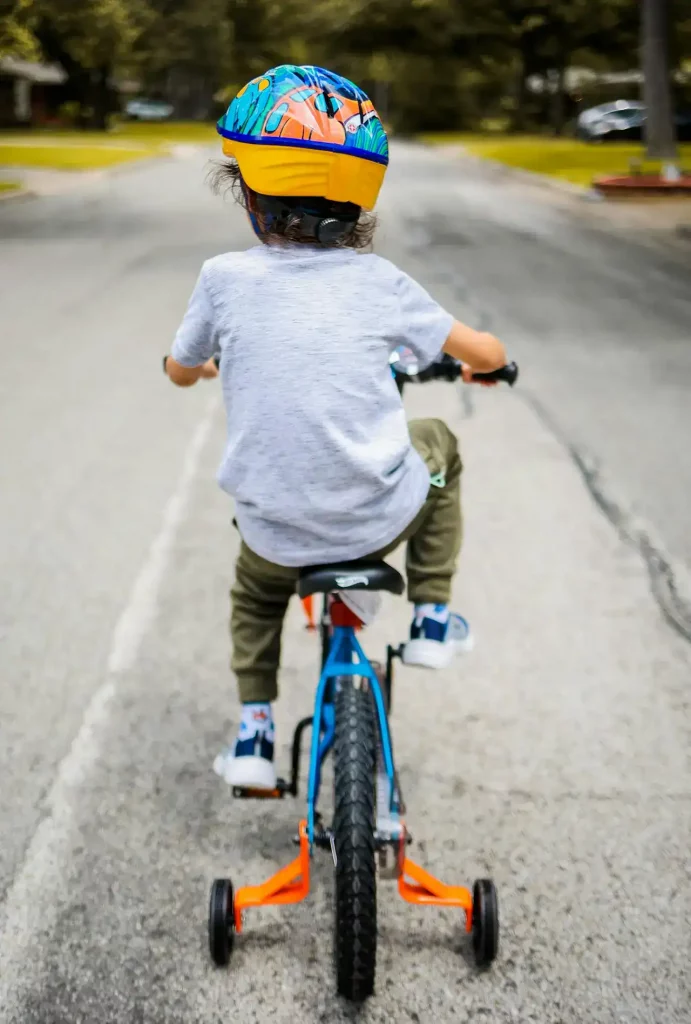
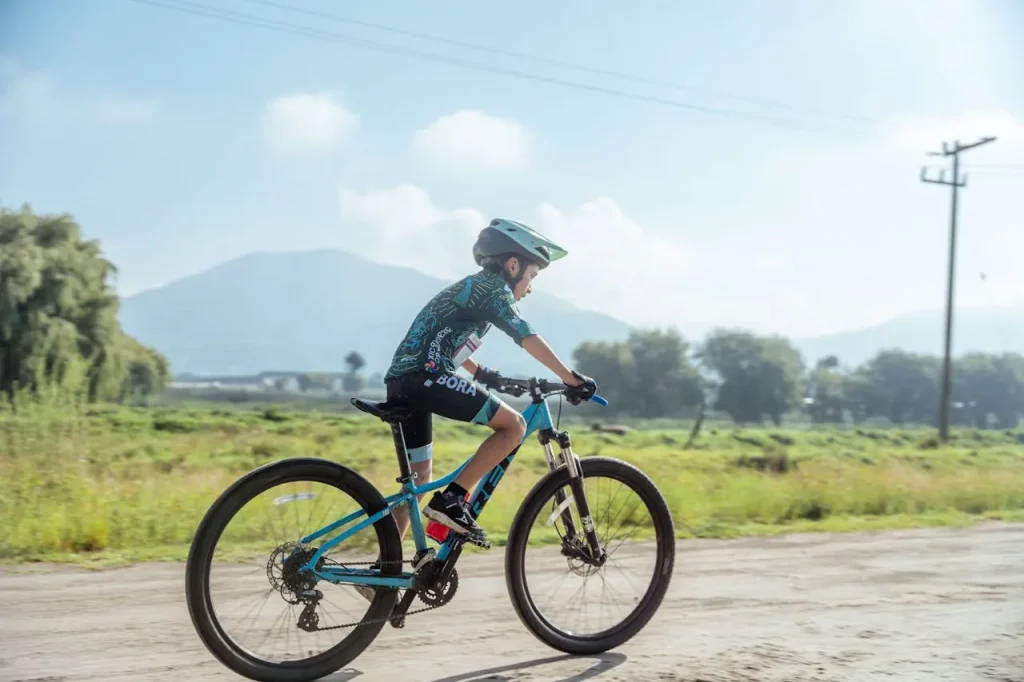
By following these tips, you’ll be better equipped to choose a kids’ bike helmet that offers the best protection and comfort for your child while they enjoy their cycling adventures.
Tips for Teaching Steering and Turning
- Start with Basic Balance: Before introducing steering and turning, ensure that your child has mastered basic balance while riding in a straight line. Practice in a flat, open area free from obstacles.
- Start with Wide Turns: Begin by teaching your child how to make wide, gentle turns. Have them practice riding in large circles or gentle S-shaped paths to get a feel for steering.
- Use a Gradual Approach: Begin by teaching your child how to lean gently to one side to initiate a turn. Encourage them to practice leaning while riding slowly in a straight line before attempting turns.
- Look in the Direction of the Turn: Encourage your child to look in the direction they want to turn. This helps them intuitively steer the bike in the right direction and maintain balance.
- Use Cones or Markers: Set up cones or markers for your child to weave around, creating a fun slalom course that helps them practice steering and turning.
- Teach Proper Braking: Ensure your child knows how to use the brakes properly when turning, especially when navigating tighter turns or when riding downhill.
- Practice Lean and Steer Technique: Teach your child the lean and steer technique, where they gently lean the bike in the direction they want to turn while simultaneously steering the handlebars.
- Practice Turning in Both Directions: Encourage your child to practice turning in both directions to develop balance and coordination on both sides. Start with gentle, wide turns and gradually progress to sharper turns as they gain confidence.
- Progress to Tighter Turns: As your child becomes more comfortable with wide turns, challenge them to make tighter turns, gradually decreasing the turning radius.
- Use Verbal Cues and Praise: Provide clear instructions and use praise to build your child’s confidence as they learn to steer and turn. Celebrate their progress and reassure them that it’s okay to make mistakes while learning.
- Practice in Different Environments: Once your child feels comfortable turning in a controlled environment, gradually introduce them to different riding environments, such as parks or bike paths. This helps them learn to adapt their turning skills to various situations.
- Use Games and Challenges: Make learning fun by incorporating games and challenges into practice sessions. For example, set up a mini obstacle course with cones or markers and challenge your child to navigate through it while practicing turns.
Be Patient and Supportive: Learning to steer and turn takes time and practice, so be patient with your child and provide plenty of support and encouragement along the way. Celebrate their successes, no matter how small, and offer constructive feedback to help them improve.
How to Make Learning to Ride the Bike Fun
- Start with Balance Bikes: Balance bikes are pedal-less bikes that help children develop balance and coordination before transitioning to a traditional bike. They make learning to ride feel like play and build confidence without the pressure of pedals.
- Turn It Into a Game: Incorporate games like “Red Light, Green Light” or “Follow the Leader” to make practice sessions more entertaining.
- Set Up an Obstacle Course: Use cones, pool noodles, or other objects to create a fun obstacle course that challenges your child to steer, turn, and stop.
- Use Positive Reinforcement: Celebrate small victories and offer encouragement as your child progresses. Praise their efforts and focus on the fun aspects of cycling.
- Make It Social: Organize group practice sessions with friends or neighbors to turn learning into a social activity. This can help boost motivation and make the experience more enjoyable.
- Choose Fun Destinations: Once your child has mastered the basics, plan short rides to exciting destinations like a local park or ice cream shop.
- Personalize the Experience: Let your child choose fun accessories like bells, stickers, or streamers to personalize their bike and make it uniquely theirs. Consider decorating their bike with stickers or accessories to make it feel special.
- Mix It Up: Vary your practice sessions to avoid boredom. Switch between skill-building exercises, games, and short rides to keep things interesting.
- Make It a Family Affair: Get the whole family involved by planning group rides or activities that everyone can enjoy.
- Turn Practice into a Story: Create a story or narrative around learning to ride a bike, casting your child as the brave adventurer on a quest to master biking skills. Use storytelling to ignite their imagination and make the experience more memorable.
- Plan Bike-themed Activities: Incorporate bike-themed activities into your child’s routine, such as bike-themed arts and crafts, watching movies about biking, or reading books about biking adventures.
Set Achievable Goals: Break down the learning process into smaller, achievable goals, such as balancing for a certain distance, turning smoothly, or riding around obstacles. Celebrate each goal reached to maintain motivation and momentum.
To Your Kids' Cycling Future
Happy Riding!
I hope you found this informative. Check out my other related posts such as finding the right bike fit for adults or how to get the best bike fit for women. You can also refer to posts what to wear mountain biking to see bike accessory options. We also recorded a related podcast on injuries and prevention.
